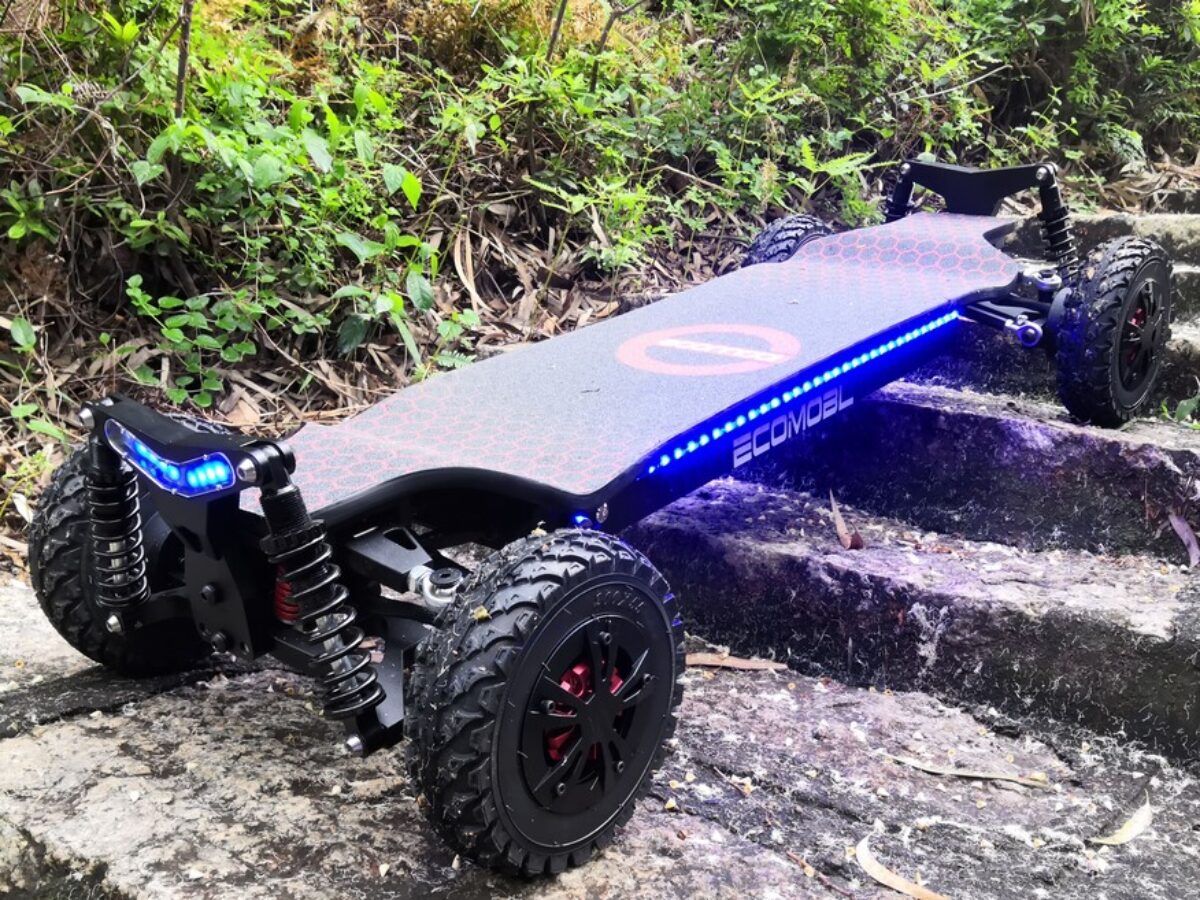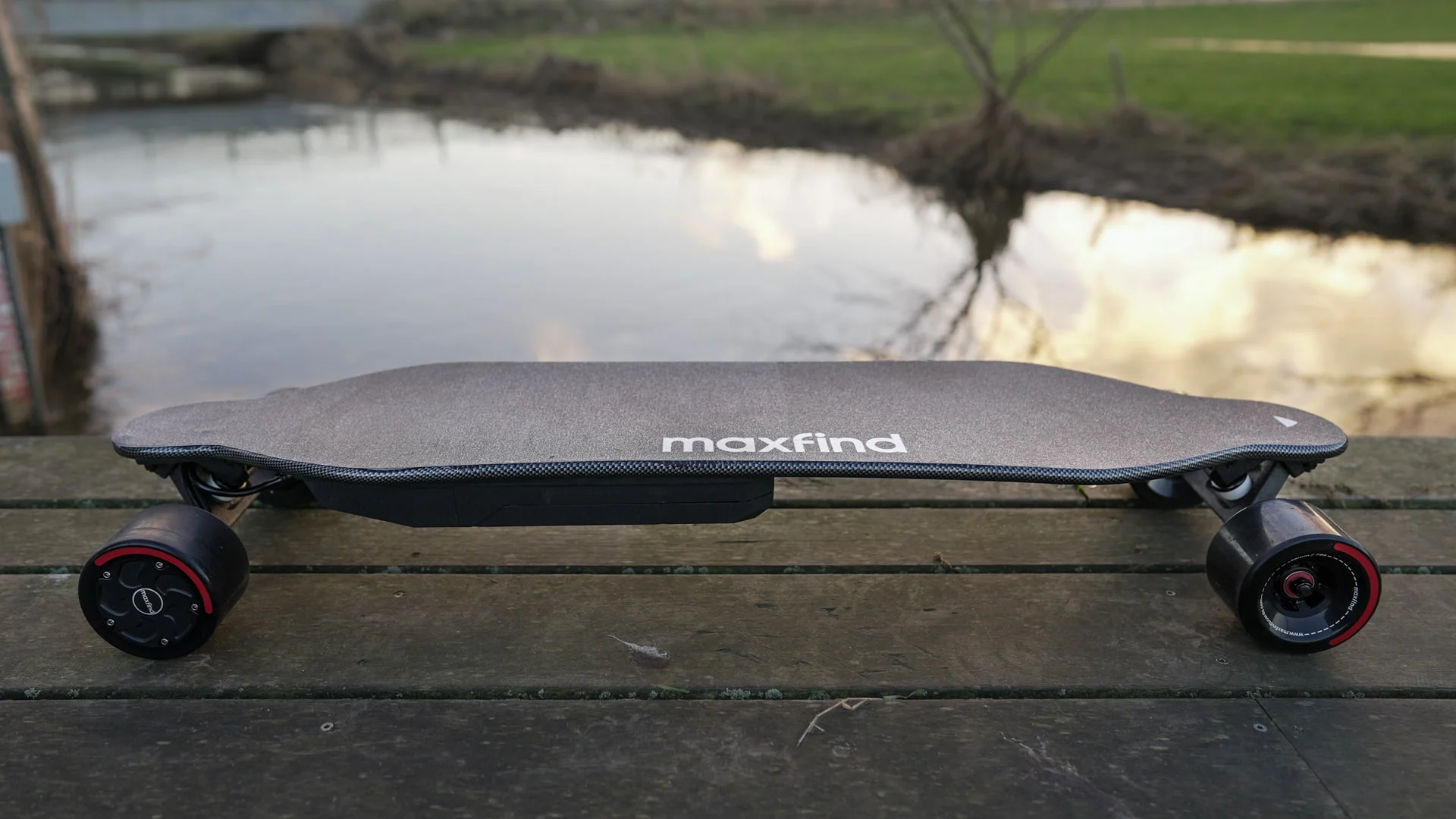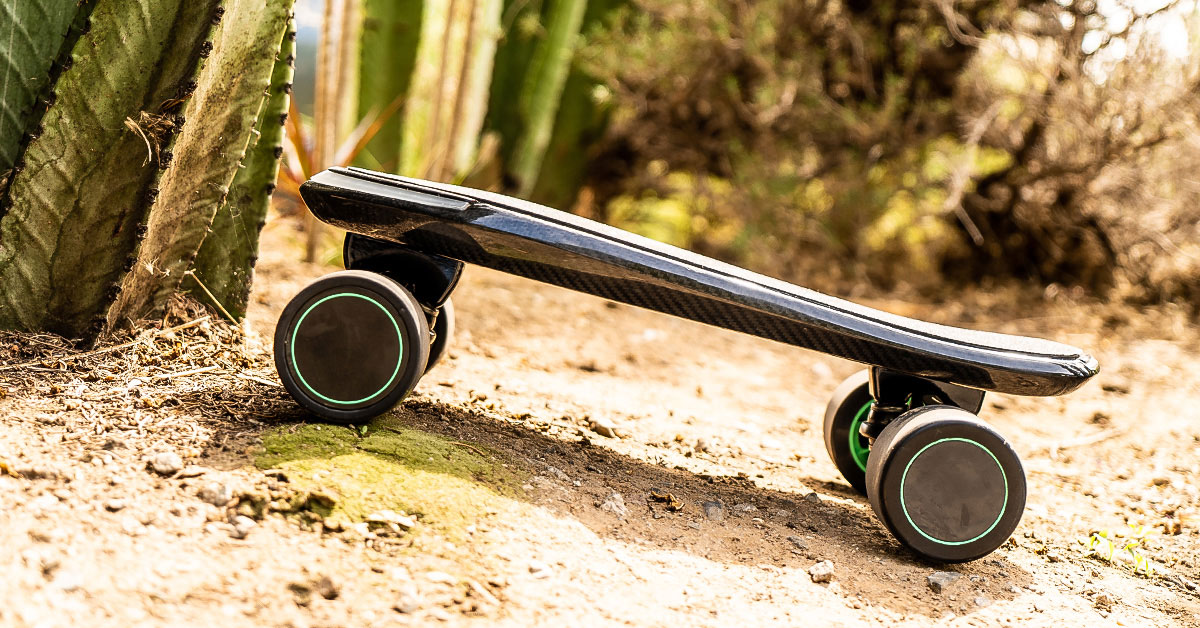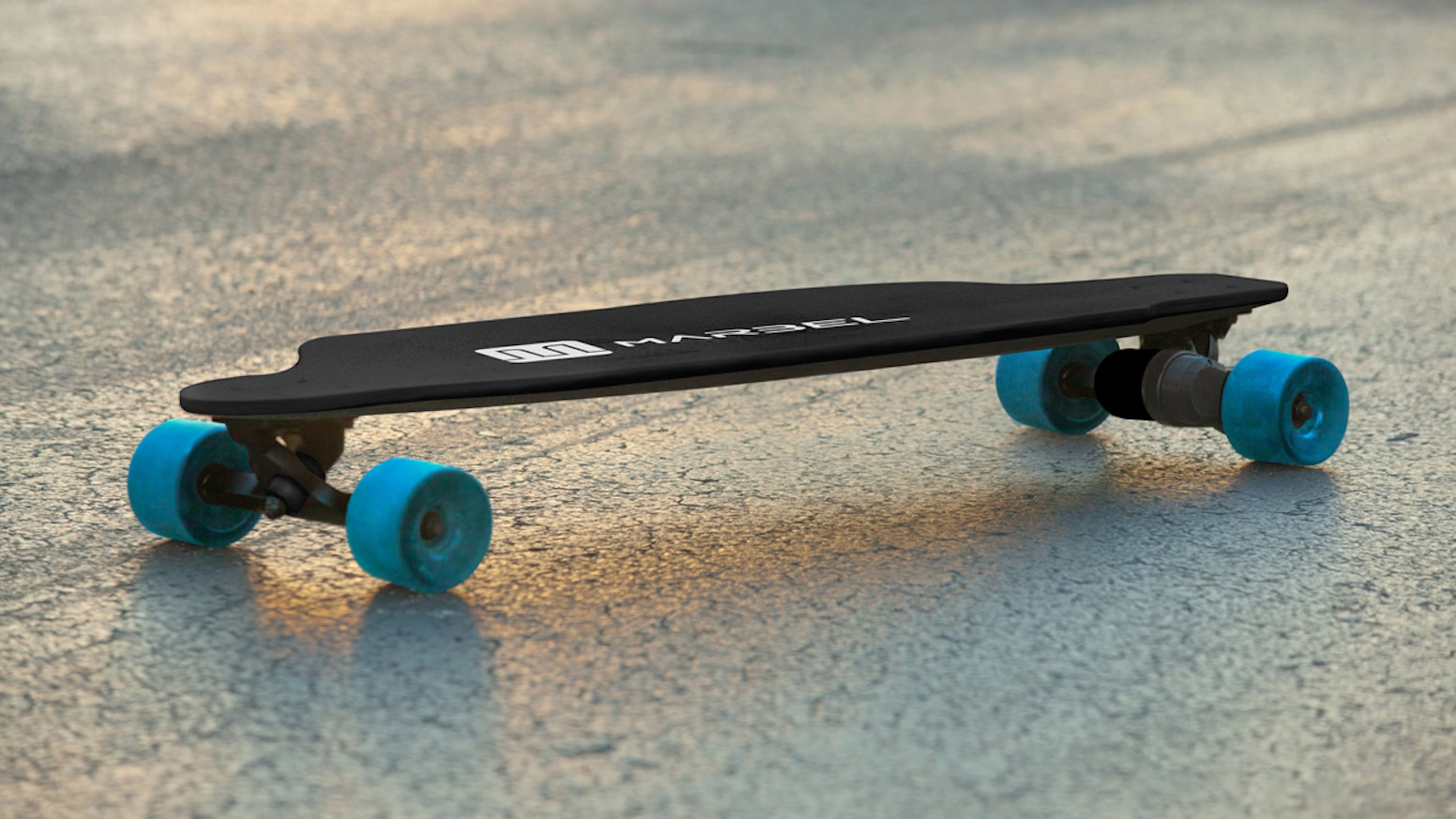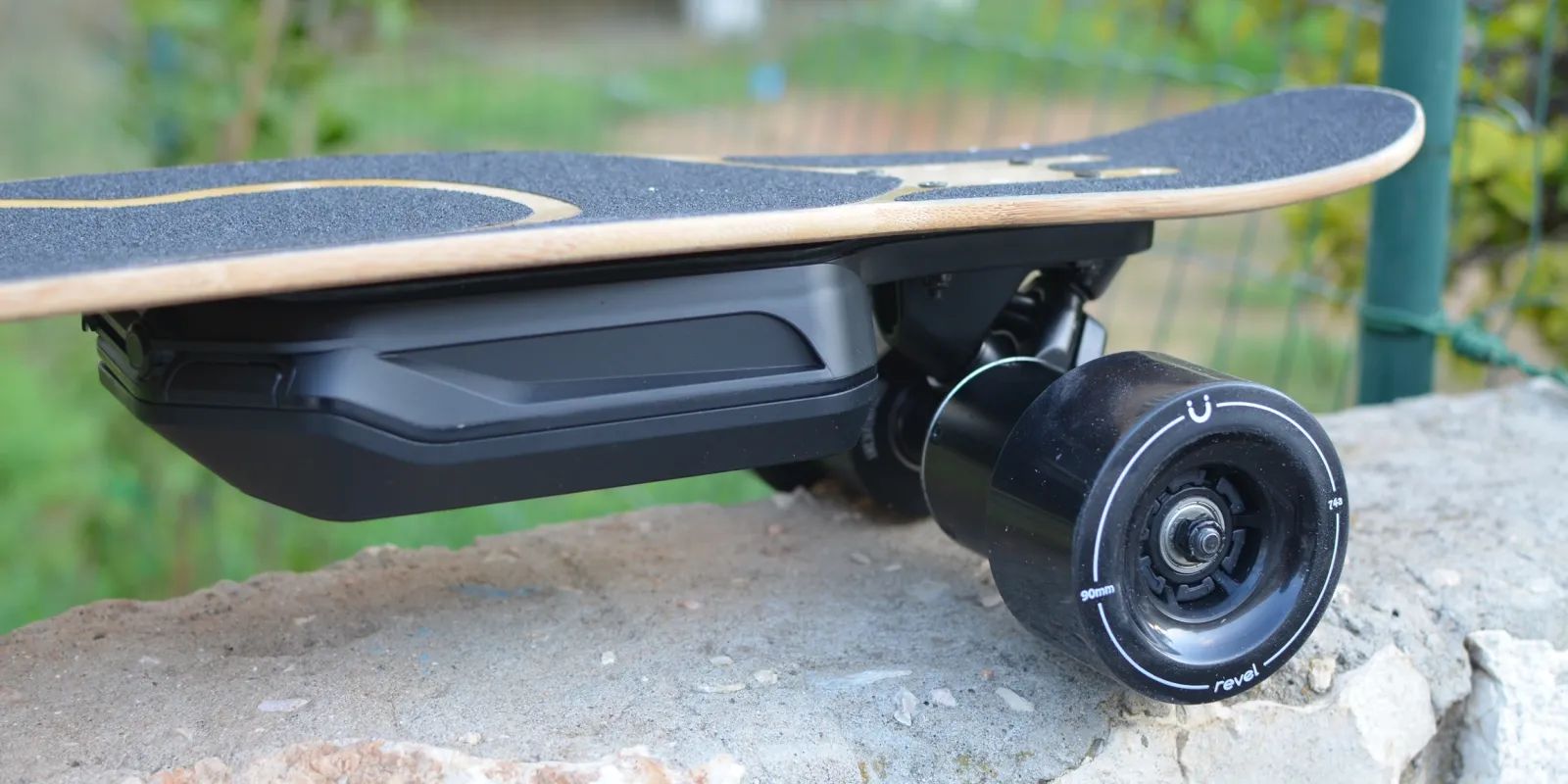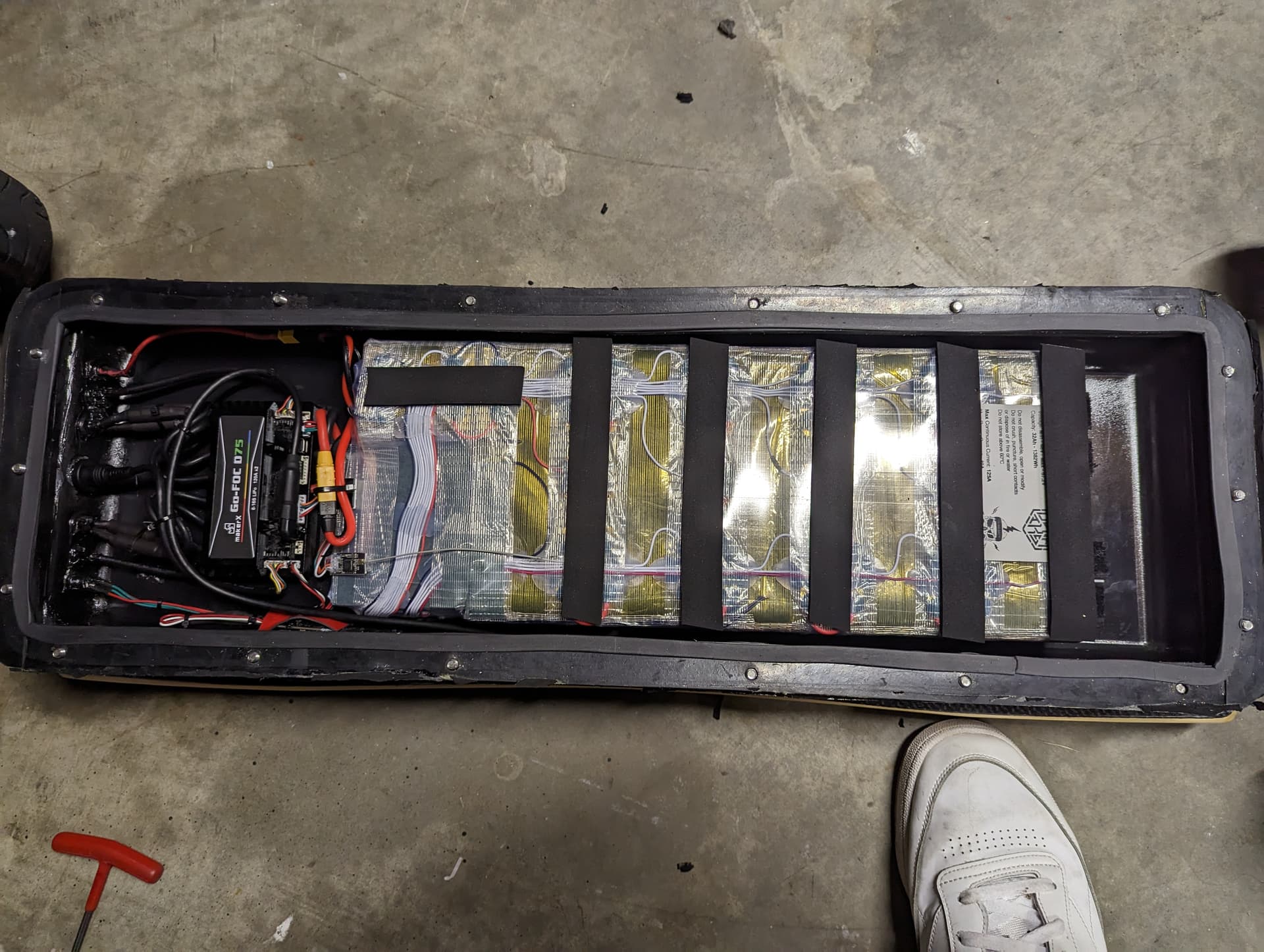Introduction
Welcome to the world of electric skateboarding, where speed and thrill converge. Riding an electric skateboard can be an exhilarating experience, but sometimes, you may encounter a common issue – excessive wiggling. If your electric skateboard wiggles too much, it can hinder your ride quality, stability, and overall enjoyment.
But fret not! In this article, we will explore the reasons behind the wiggling and provide actionable solutions to help you get back to smooth sailing. Whether you are a seasoned rider or just starting out, these tips will assist you in resolving the excessive wiggling and ensure a safer and more enjoyable ride. So, let’s dive in!
Electric skateboards are designed with components that allow for maneuverability and flexibility. However, certain factors can contribute to the wiggling sensation. It can be attributed to various elements, including the trucks, bushings, deck, wheels, and even the bearings. By understanding these components and how they affect the stability of your skateboard, you can identify the root cause and take appropriate measures to mitigate the wiggling.
Throughout this article, we will discuss each component in detail and provide step-by-step instructions on how to check, adjust, and potentially replace certain parts to eliminate the excessive wiggling. Remember, every skateboard is unique, and different adjustments may be required based on your specific model and preferences. So, let’s get started and get your electric skateboard back on track!
Why does the electric skateboard wiggle?
Before we delve into the solutions for fixing a wiggly electric skateboard, it’s important to understand the underlying reasons for this issue. Several factors can contribute to the excessive wiggling sensation. Let’s take a closer look at some of the most common causes:
- Trucks: The trucks of an electric skateboard play a crucial role in maintaining stability. If they are too loose or too tight, it can lead to wobbling. Loose trucks allow for excessive movement, while overly tight trucks restrict maneuverability. Finding the right balance between the two is crucial for a smooth ride.
- Bushings: Bushings are the rubber or urethane cushions in the trucks that contribute to the skateboard’s turning and stability. If the bushings are too soft or worn out, they may not provide the necessary support and can cause the skateboard to wobble excessively.
- Deck: The deck acts as the platform for your electric skateboard. If it is damaged, warped, or poorly constructed, it can compromise the overall stability and responsiveness. A damaged deck can lead to a wiggly ride, making it crucial to inspect the deck for any signs of wear or structural issues.
- Wheels: The condition of the wheels can greatly affect the ride quality. If the wheels are worn out, unevenly worn, or have insufficient grip, it can result in instability and wobbling. Regularly inspecting and maintaining the wheels is essential for a smooth and stable ride.
- Bearings: The bearings are responsible for the smooth rotation of the wheels. If they are dirty, rusted, or damaged, they can hinder the wheel movement, leading to wobbling. Proper maintenance and occasional replacement of the bearings can help prevent this issue.
Understanding the key components that contribute to the wiggling of an electric skateboard is crucial for effectively addressing the issue. By identifying the specific cause or combination of factors contributing to the excessive wiggling, you can take appropriate measures to rectify the problem. In the following sections, we will explore each component in detail and guide you through the steps to mitigate the wiggling for a more enjoyable ride.
Check the trucks
The trucks of your electric skateboard are an integral part of its stability and maneuverability. If they are not properly adjusted, it can contribute to the wiggling sensation. Here are the steps to check and adjust the trucks:
- Start by flipping your electric skateboard upside down on a flat surface, so the wheels are facing upwards.
- Inspect the kingpin nut on each truck. The kingpin nut is located in the center of the truck. Make sure it is securely fastened but not overly tight. If it feels loose, use a skate tool or wrench to tighten it.
- Next, check the tightness of the trucks. Give them a gentle wiggle from side to side. If they feel too loose, you will need to tighten them. Using a skate tool or wrench, adjust the truck bolts incrementally until you find the right amount of tightness. Ensure that both trucks are tightened equally for balanced stability.
- Avoid overtightening the trucks, as it can restrict the turning radius and make the ride uncomfortable. Finding the right balance between tightness and maneuverability is essential.
- Once you have adjusted the trucks, test the skateboard by gently rocking it back and forth. If it feels more stable and the excessive wiggling is minimized, you have successfully addressed the issue. If the wiggling persists, proceed to the next section for further troubleshooting.
By checking and adjusting the trucks, you can significantly improve the stability and overall ride quality of your electric skateboard. Properly tightened trucks provide the necessary support and responsiveness, reducing the wiggling sensation and ensuring a smoother experience. Remember to check the trucks periodically to maintain optimal performance.
Tighten the trucks
If your electric skateboard continues to wiggle even after checking the trucks, it may be necessary to tighten them further. Properly tightened trucks can provide better stability and reduce the wiggling sensation. Follow these steps to tighten the trucks:
- Flip your electric skateboard upside down and locate the kingpin nut on each truck. The kingpin nut is in the center of the truck.
- Using a skate tool or wrench, tighten the kingpin nut on each truck in small increments. Start by turning the nut clockwise. Be careful not to overtighten it, as this can restrict the skateboard’s turning ability and make it uncomfortable to ride.
- After tightening the kingpin nut on both trucks, give your electric skateboard a gentle wiggle from side to side. If the wiggling is still present, continue tightening the trucks in small increments until you find the right amount of tightness.
- Test the skateboard by rocking it back and forth. If the wiggling has significantly reduced or disappeared, you have successfully tightened the trucks. However, if the wiggling persists, you may need to explore other possible causes, such as the bushings, deck, or wheels.
- Remember to tighten both trucks evenly to maintain balance and stability. If one truck is tighter than the other, it can lead to an imbalanced ride, affecting your control and comfort.
Tightening the trucks can help minimize the wiggling of your electric skateboard. It is important to find the right balance between tightness and maneuverability to ensure a smooth and stable ride. Regularly check the tightness of your trucks and make adjustments if needed to maintain optimal performance.
Adjust the bushings
If tightening the trucks did not resolve the wiggling issue with your electric skateboard, it’s time to take a closer look at the bushings. The bushings are the rubber or urethane cushions located in the trucks that affect the skateboard’s turning and stability. Here’s how you can adjust the bushings to minimize the wiggling:
- Ensure that your electric skateboard is placed upside down on a flat surface, with the wheels facing upward.
- Take a skate tool or wrench and loosen the kingpin nut on each truck. This will allow you to access the bushings.
- Inspect the bushings to determine their current condition. If they appear worn out, cracked, or compressed, it may be necessary to replace them. However, if they seem to be in good condition, you can proceed with adjusting them.
-
Use a skate tool or your fingers to adjust the bushings. You can tighten or loosen them depending on your preferences and riding style.
– To make the trucks stiffer and reduce the wiggling, tighten the bushings by turning them clockwise.
– To make the trucks more responsive and increase maneuverability, loosen the bushings by turning them counterclockwise.Make sure to adjust the bushings of both trucks equally for balanced stability.
- After you have adjusted the bushings, tighten the kingpin nut on each truck to secure them in place. Ensure that the nut is securely fastened but not overly tight.
- To test the effectiveness of your adjustments, gently rock the skateboard back and forth. If the wiggling has significantly diminished or disappeared, you have successfully adjusted the bushings. However, if the wiggling persists, it may be necessary to explore other potential causes.
Adjusting the bushings can provide better stability and control while riding your electric skateboard. Experiment with different settings to find the right combination that suits your preference and helps reduce the wiggling. Remember to regularly inspect and maintain the bushings to ensure optimal performance.
Check the deck
The deck of your electric skateboard plays a significant role in maintaining stability and reducing wiggling during your rides. If the deck is damaged, warped, or poorly constructed, it can contribute to the wiggling sensation. Here’s how you can check the deck for any signs of wear or structural issues:
- Inspect the deck for any visible cracks, splits, or delamination. Pay close attention to areas where the deck may have experienced impacts or excessive flexing. If you notice any significant damage, it might be necessary to replace the deck altogether.
- Place your electric skateboard on a flat surface and apply gentle pressure on the deck. This will help you identify if there are any areas of excessive flex or warping. A warped deck can lead to instability and wiggling while riding. If you notice any irregularities in the deck’s shape, it may be time to consider a replacement.
- Check the mounting holes and the hardware that attaches the trucks to the deck. Ensure that the screws are tightened properly and that there are no loose or missing hardware. Loose screws can lead to an unstable ride, so make sure they are secure.
- If your electric skateboard has a flexible deck, check if the flex is within the expected range for your weight and riding style. Excessive flex can cause instability and contribute to wiggling. If the flex is too much or too little, you may need to consider a deck with a different construction or stiffness rating.
- Regularly clean and maintain your deck. Remove dirt, debris, and any sticky substances that may affect the grip or performance of your skateboard. Keeping the deck clean and in good condition can help ensure a smoother and more stable ride.
By carefully inspecting and maintaining the deck, you can prevent potential issues that may lead to wiggling. If you notice any significant damage or irregularities, it is advisable to consult with a professional or consider replacing the deck to ensure your safety and improve your riding experience.
Inspect the wheels
The wheels of your electric skateboard contribute greatly to the overall ride quality and stability. If the wheels are worn out, unevenly worn, or have insufficient grip, it can result in instability and wiggling. Here’s how you can inspect the wheels and ensure they are in optimal condition:
- Examine the wheels for any signs of wear or damage. Look for flat spots, chunks missing from the surface, or uneven wear patterns. If you notice any significant damage, it may be necessary to replace the wheels to ensure a smoother ride.
- Check the hardness rating of the wheels. Softer wheels typically provide more grip, but they may wear out faster. Harder wheels offer a smoother ride but can be less forgiving on rough surfaces. Consider your riding style and the type of terrain you usually encounter, and choose the appropriate hardness rating for your needs.
- Inspect the wheel bearings for any signs of dirt, rust, or damage. Clean the bearings thoroughly with a bearing cleaning kit if necessary. Bearings that are dirty or damaged can hinder the smooth rotation of the wheels, leading to wiggling. If cleaning doesn’t improve their performance, it may be time to replace the bearings.
- Check the tightness of the wheel nuts. Use a skate tool or wrench to ensure that the nuts are securely fastened but not overly tightened. Loose wheel nuts can cause the wheels to wobble and compromise stability. Be sure to tighten the nuts on all wheels evenly for balanced performance.
- If you notice any vibration or shaking while riding, it could indicate an issue with the wheels or their alignment. In such cases, consider seeking professional assistance to diagnose and address the problem.
Regularly inspecting and maintaining your skateboard’s wheels is crucial for a smooth, stable, and enjoyable ride. By identifying any signs of wear or damage and taking appropriate action, you can minimize wiggling and ensure optimal performance from your electric skateboard.
Consider replacing the bearings
The bearings in your electric skateboard are responsible for allowing the wheels to spin smoothly. Over time, bearings can become dirty, rusted, or damaged, resulting in a decrease in performance and potentially contributing to wiggling while riding. If you’ve tried cleaning your bearings but haven’t seen an improvement, it may be time to consider replacing them. Here’s what you need to know:
- Inspect the bearings closely for signs of wear, rust, or damage. Look for any visible dirt or debris that may be stuck inside the bearings.
- If the bearings are excessively dirty or rusted, try cleaning them using a bearing cleaning kit. Follow the manufacturer’s instructions to ensure a thorough cleaning process. This may help restore the bearings’ performance.
- After cleaning, test the bearings by spinning the wheels. If they still feel rough, make noise, or do not spin freely, it’s likely that the bearings are beyond repair and should be replaced.
- When purchasing new bearings, consider choosing high-quality bearings suitable for electric skateboards. Look for bearings with a high ABEC rating, as this indicates a smoother and more precise rotation.
- To replace the bearings, use a bearing puller or skate tool to remove the old bearings from the wheels. Clean the wheel hub thoroughly before installing the new bearings.
- Insert the new bearings into the wheels, ensuring they are pressed in securely. Avoid overtightening the axle nut as this can restrict the smooth rotation of the bearings.
- After replacing the bearings, give your electric skateboard a test ride to see if the wiggling has diminished. You should notice a difference in the smoothness of the ride if the bearings were the cause of the issue.
Replacing the bearings can greatly enhance the performance and stability of your electric skateboard. By investing in high-quality bearings and maintaining them properly, you can enjoy a smoother and more enjoyable riding experience while minimizing wiggling and ensuring optimal performance.
Experiment with the wheelbase
The wheelbase refers to the distance between the front and rear axles of your electric skateboard. It plays a crucial role in the stability and maneuverability of your ride. If you’re experiencing excessive wiggling, experimenting with the wheelbase can help improve your skateboard’s performance. Here’s how you can do it:
- Start by locating the mounting holes on the deck where the trucks are attached. These holes allow for different configurations of the truck placement, which affects the wheelbase.
- Take note of the current wheelbase setting on your skateboard. This can vary depending on your skateboard’s design and model.
- Using a skate tool or wrench, loosen the truck bolts and adjust the position of the trucks along the mounting holes. You can either push them towards the nose or tail of the skateboard to increase or decrease the wheelbase, respectively.
- Make small incremental adjustments to find the sweet spot that reduces wiggling while maintaining stability and maneuverability. It’s important to experiment with different wheelbase settings to find the optimal configuration for your riding style and preference.
- Once you’ve made the adjustments, tighten the truck bolts securely but not overly tight. Ensure that both trucks are tightened evenly to maintain balance and stability.
- Take your electric skateboard for a test ride to assess the effect of the new wheelbase configuration. Pay attention to any changes in stability, wiggling, and overall ride quality.
Experimenting with the wheelbase allows you to customize your electric skateboard’s performance to suit your needs. By finding the right wheelbase configuration, you can significantly reduce wiggling and improve stability, ensuring a smoother and more enjoyable ride.
Conclusion
Excessive wiggling can be frustrating when riding an electric skateboard, but it’s a common issue with several potential causes. By systematically checking and addressing these factors, you can minimize wiggling and improve the stability and overall ride quality. Remember that each electric skateboard is unique, so it may require a combination of adjustments to find the solution that works best for you.
Start by checking the trucks and ensuring they are properly tightened. Adjusting the bushings can also help fine-tune the skateboard’s responsiveness. While inspecting the deck, wheels, and bearings, carefully analyze any signs of wear, damage, or misalignment. Replace components as necessary to ensure optimal performance. Additionally, experimenting with the wheelbase can help achieve a more stable and controlled ride.
Regular maintenance and periodic inspections are key to preventing wiggling in the future. Keep your electric skateboard clean, check the components regularly, and address any issues promptly. Investing time in proper maintenance and adjustments will not only enhance your riding experience but also extend the lifespan of your skateboard.
Finally, always prioritize your safety while riding an electric skateboard. Be aware of your surroundings, wear appropriate protective gear, and follow local regulations. If you encounter persistent issues or are unsure about any adjustments, it’s advisable to seek professional assistance.
With the information and steps outlined in this article, you can confidently address and minimize wiggling on your electric skateboard. Stay proactive, enjoy the ride, and keep exploring the endless possibilities of electric skateboarding.







